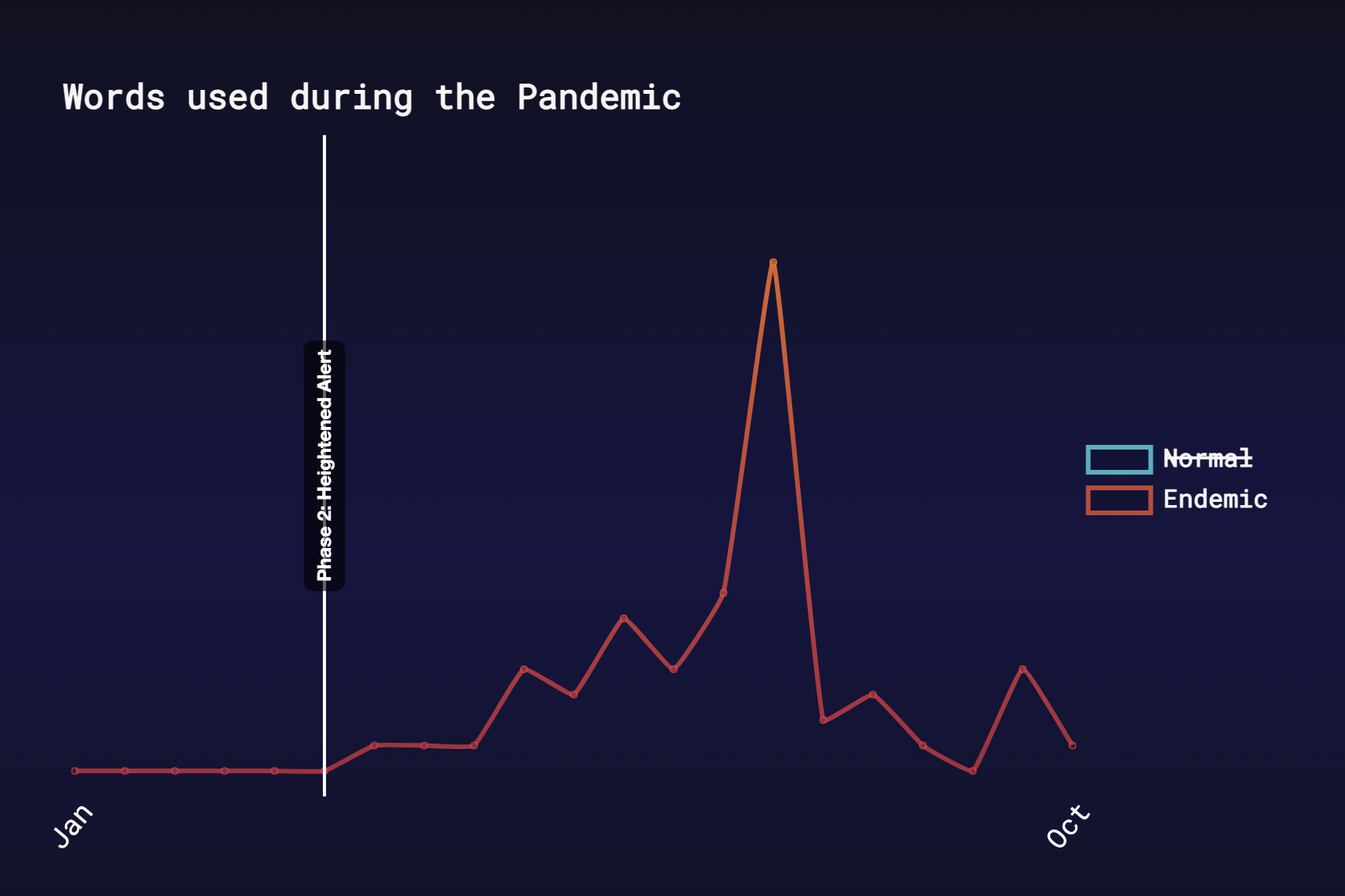Data
“Powerful language can be used to motivate action, and war analogies have somewhat inevitably come to the fore during this pandemic.”

Introduction
A line graph was chosen to visualise the relationship between the 2 buzzwords chosen as well as observe how the usage of these words evolved over time. From the first usage of the words all the way to the eventual ending of its lifespan.
The line graph was useful in helping to get a good impression of trends and changes over time as well as to determine the relationship between the variables chosen.
Findings
One of the major findings was the inverse relationship between the 2 buzzwords “endemic” and “normal/new-normal”. It almost seemed calculated that when one word began to be used more, the other was used less frequently. At the highest peak of usage, the word “endemic” was used 20 times in a single briefing while the word “normal” was used 0 times in the same briefing.
We also begin to see an introduction to these words around the announcement of the “phase 2 heightened alert” and that this vocabulary was consistently used throughout the period. Eventually, the usage began to trend down and the vocabulary seems to be fatigued.


Insights
To quote a source directly “Language matters in public health” “Powerful language can be used to motivate action, and war analogies have somewhat inevitably come to the fore during this pandemic.” From the introduction of new scientific terminologies to the repurposing of existing words like “frontlines”, language has definitely evolved over the (relatively) short time the pandemic has been around.
Studying the emergence and usage of the new vocabulary might give us an insight not only into the scientific advancements and positions of the current times but even into understanding things like public morale.
Conclusion
The inversely proportional relationship the buzzwords have between each other seems to hint that the language used during these briefings are carefully calculated. We come to an understanding that the language used to address the public can in fact control the perception of the health directives in place as well as to motivate action and sway the public into complying with and accepting the situation that the government has put them in.
That being said, the same old rhetoric might not be able to be used consistently as just with public morale, the language can get overused and tired out if the situation does not seem to improve (despite what the authorities seem to say).
References
- Kreuz, Roger J. “How Covid-19 Is Changing the English Language.” The Conversation, 14 Oct. 2021, https://theconversation.com/how-covid-19-is-changing-the-english-language-146171.
- “Language Matters in a Pandemic.” .Nature Microbiology, vol. 5, no. 11, 2020, pp. 1309–1310., https://doi.org/10.1038/s41564-020-00812-9.
- Ro, Christine. “Why We've Created New Language for Coronavirus.” . BBC Worklife, BBC, https://www.bbc.com/worklife/article/20200522-why-weve-created-new-language-for-coronavirus